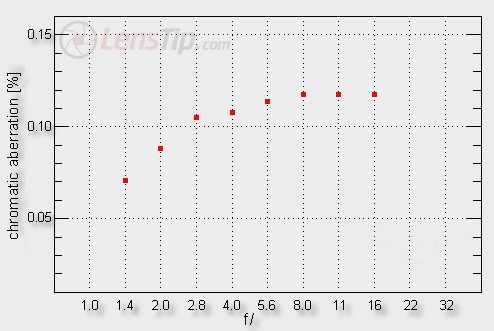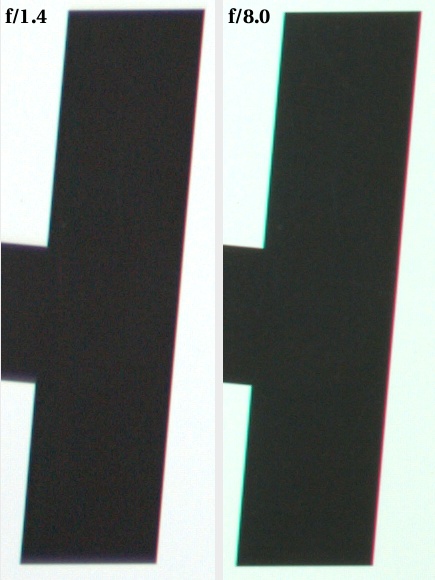Leica D Summilux 25 mm f/1.4
5. Chromatic aberration

Exactly this aberration level increase on stopping down is partially the reason of weaker frame edge performance. Stopping down reduces other aberrations so the resolution should increase. Here, it doesn’t increase as fast as it should because it is limited by the increasing chromatic aberration.
Please Support UsIf you enjoy our reviews and articles, and you want us to continue our work please, support our website by donating through PayPal. The funds are going to be used for paying our editorial team, renting servers, and equipping our testing studio; only that way we will be able to continue providing you interesting content for free. |
- - - - - - - - - - - - - - - - - - - - - - - - - - - - - - - - - - - - - - - - - - - - - - - -
If you want to be objective, you must notice that Leica still fares pretty well, when compared to its competitors. The Canon 1.4/35 on the 20D sensor showed aberration on the level from 0.12 to 0.14 % so definitely bigger.







